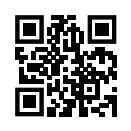7.1 Effects of digitalisation
|
Previous
Chapter 6: Electronic communications
|
Next
Chapter 8: Database management
|
 CHAPTER OVERVIEW
CHAPTER OVERVIEW
 Learning outcomes
Learning outcomes
At the end of this chapter you should be able to:
- describe the effect of digitalisation on future careers
- explain the effect of digitalisation on the workplace and employment practices
- describe ways to protect your online identity.
INTRODUCTION
Combined the computer, mobile phone, internet and the World Wide Web now affect most Western people’s lives on an everyday basis. More than half of the world’s population is connected to the internet in one form or another. Technology has provided an interconnectedness in society and paved the way for digitalisation.
SOCIAL IMPLICATIONS IN A NUTSHELL
Since the start of the industrial revolution in 1760, machines have been taking over human jobs. At the start, machines could only do simple manual tasks like weave a fabric or create basic hand tools. However, as time went by, machines became more and more complicated and could do more and more complicated tasks.

In previous years the only way a person could access any kind of entertainment was to go to a movie or sit in front of the television and watch what a broadcaster chose for you to watch. Today you can not only choose what you would like to watch when with Video on Demand, you can also be a producer of your own content by uploading Vlogs, Blogs or podcasts for others with similar intersts to view and listen to.
 Activity 7.1
Activity 7.1
In small groups conduct some research and discuss the following:
- How has the internet changed over the last 15 years?
- How has the internet changed society and a person’s everyday life?
- How are robots used in businesses?
- What is the future for robots? How will this change society?
UNIT
7.1 Effects of digitalisation
Digitalisation is the integration of digital technologies into everyday life and the computerisation of systems and jobs for better ease and accessibility. We see this mainly in the rise and effect of social media on society, businesses use of cell phones to keep up to date with their customers, and entrepreneurs starting companies. Let’s look at the future of careers due to digitalisation to see how digitalisation has affected the workforce.
SOCIAL IMPLICATIONS
There are ethical and social issues with information systems to show how it has impacted society.
Our current society is very dependent on information systems which has become a part of our daily life in almost every aspect, the workplace, our private life’s, the government and even to individuals with no access to these systems are affected in some way.
WHAT IS AN INFORMATION SYSTEM?
An information system (IS) is any organised system for the collection, organisation storage and communication of information.
Impact on society:
- Sharing of Information
- Education
- Enviroment
- Political
ETHICS
Ethics is referring to the right and wrong of an individual acting on free will using choicechoice to determine their behaviour.
Not all ethical choices are the right ones and some behaviour creates social issues. This issues are related to privacy and security.
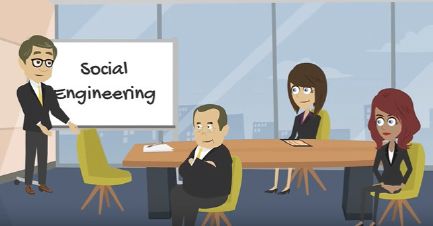
FUTURE CAREER
Many jobs face a high probability of being replaced in the forseeable future.. Automation has already replaced various jobs in manufacturing, agriculture and mining.
The table below lists and describes a few of the ICT careers.
Table 7.1: ICT careers
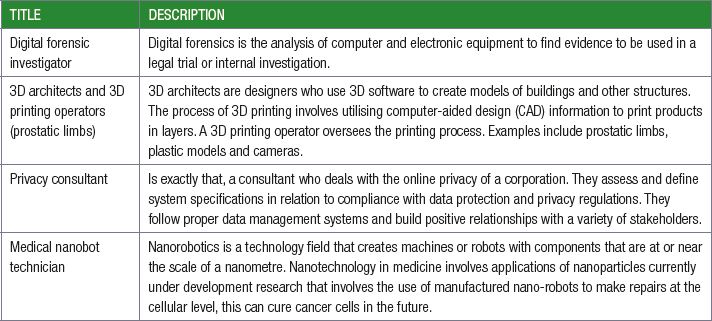
EFFECT ON WORKPLACE AND EMPLOYMENT PRACTICES
The growth of computers and digitisation in the workplace have had a significant effect on companies, employers and employees around the world. In this section, you will learn more about the effects of artificial intelligence, robotics and automation on the workplace, as well as learn how remote and flexible workspaces are changing the way companies work.
MOBILE AND VIRTUAL OFFICES
Mobile offices are temporary offices that are designed to be transported or moved easily. These offices would be used by anyone who only needs a laptop and internet in their office. A mobile office can significantly improve the productivity of remote workers who need to travel regularly.
New companies are now specialising in providing shared working spaces for remote workers. These are either open-plan or closed offices that offer features you would find in a workplace such as a receptionist and boardroom, which can be rented for one or more days a week.

QR CODE
Virtual offices that businesses can rent are like shared working spaces. Once rented, the business gains access to a business address, conference rooms, printing and faxing services, a phone number and a receptionist. However employees will still work remotely.
DECENTRALISATION OF LABOUR
Decentralising labour means that people no longer have to be together in an office to perform many different types of jobs. This means that they can work from home and avoid drains on their time such as sitting in rush hour traffic every day. The fact that internet speeds have vastly increased in recent years means that people can still attend meetings when necessary, using video conferencing.
This does of course require more self discipline from staff to ensure that they do actually work, as there will not be a boss ensuring that they are working on any given day. The reverse could also become a problem as people may tend to work longer hours at home than they would in the office because they never really leave their work behind.
OFFICE AUTOMATION
Office automation is the collective hardware, software and processes that allow automation of the information processing and communication tasks in an organisation. Computer technology and software are used to digitise, store, process and communicate most routine tasks and processes in a standard office. This allows office workers to have more time for other tasks.
Automating tasks in the office can have both positive and negative effects on workers. Certain tasks can be performed more quickly and accurately using a computer, which would allow the workers to spend more time on other aspects of their jobs. Workers may be resistant to the fact that they would have to learn how to work with computing devices in order to complete these tasks and they may feel that their jobs are threatened by the devices.
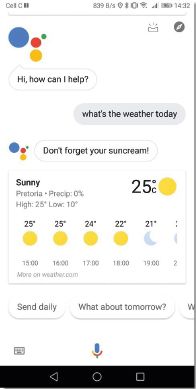
ARTIFICIAL INTELLIGENCE
Artificial intelligence (or AI) refers to a field of computer studies in which programmers try to create or simulate human intelligence in machines. In the workplace, the goal of AI is to allow computers to do tasks that typically require human intelligence. This can be anything from analysing data to directing phone calls to the correct employee.
One popular use of AI is to create chatbots that complete tasks by speaking to people in natural language. These chatbots can process questions such as, ‘What’s the weather today?’ and give natural sounding answers like ‘In Pretoria, the current weather is 25 degrees Celsius and sunny, with a forecasted high of 28 degrees and a low of 10.’
Not all AI programs have to talk like humans. Instead, some AI programs can see the world and act according to what they see. For example. self-driving cars need to constantly analyse the world around them to drive safely. At the end of 2018, Google’s self-driving cars (called Waymo) have driven more than 15 million kilometres on public roads without causing a single accident. They have, however, been involved in a few accidents where humans drive into them!
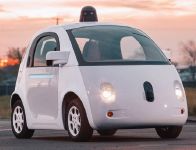
Most modern accounting packages use similar technology to automatically classify receipts and expenses. This is one example of office automation, where AI helps to automatically complete tasks that used to be done manually. Other office automation examples include:
- ordering new stock before it runs out
- paying employee salaries automatically
- giving voice directions on phones
- receiving and processing payments.
Collectively, these tasks have dramatically reduced the number of administrative staff that is needed in most offices.
Many workers are wary of Artificial Intelligence and are reluctant to embrace the technology. They justifiably fear that they will lose their jobs to a computer. People must be aware that Artificial Intelligence has not just replaced jobs, it has also created new ones such as a need for programmers to write code and devise new uses for this technology. People could find their jobs are actually made easier if some of the tasks are done by a computer.

Did you know
Professional services such as accountants and lawyers have seen significant productivity improvements thanks to computers while also seeing increased employment opportunities thanks to changes in the economy.
ROBOTICS
Robots can effectively be used to perform tasks that would be too dangerous for a human to perform or that require a large degree of repetiton. They could also be used to perform tasks that require strength beyond what a human being would have.
With the combination of Artificial Intelligence and robotics, society will start to see the automation of certain tasks.
Once again, these advances will create new jobs such as the research and designing of these systems.
While AI and automation might sound bad for employees, especially in a country like South Africa with a high rate of unemployment, these changes are good for most people. As automation decreases the cost of labour, the price of goods and services go down. When people save money on these goods and services, they can spend more money on other items that then require more human labour.
An important thing to remember is that human qualities such as social, emotional, and higher cognitive skills, involving creativity, critical thinking, and complex information processing, will also become more valuable.
 Activity 7.2
Activity 7.2
7.2.1 Complete the table, explain how digitalisation has affected either positively or negatively, these areas:

7.2.2 Read the below case studies and give your opinion about whether digitalisation has positively or negatively affected our lives. Support your choice with facts.
 Case Study 1
Case Study 1
Everyday objects such as watches, home appliances and cars are being connected to communications networks – the ‘internet of Things’ (loT) – to provide a range of services and applications, such as personal healthcare, smart electricity grids, surveillance, home automation and intelligent transport
 Case Study 2
Case Study 2
Digitalisation can help in providing electricity to the 1.1 billion people who still lack access to it. ln certain countries in sub-Saharan Africa, mobile phones are more dominant in homes than electricity. Mobile phones and their network cell towers, may be able to help provide access to a large type of energy services. New digital tools can also promote sustainability, including satellites to verify greenhouse gas emissions and technologies to track air pollution at the neighbourhood level.
UNIT
7.1 Protecting your online identity
Privacy is defined as a person’s ability to control how information about them is shared with other people or institutions. Most people intuitively understand privacy and the importance of privacy. In South Africa, the privacy of all individuals is protected in the constitution. Furthermore, the Protection of Personal Information Act (or POPI Act) ensures that citizens’ personal information (such as ID numbers, addresses and telephone numbers) may only be used in very specif c circumstances.
Let’fs look at different ways to protect your online identity:
- Exclude personal information from your social media profiles, like your phone number, address, family information or school.
- Look at your social media privacy settings
- Protect your online passwords and strengthen them.
- Use multiple passwords
- Check your phone’s privacy settings,.
- Be aware of ‘ephishing’ emails
- Check for any suspicious transactions that you didn’t authorise.
 Activity 7.3
Activity 7.3
Read the case studies and answer the questions.
 Case Study 2
Case Study 2
Frank Abagnale, whose life story inspired Steven Spielberg’s 2002 movie Catch Me if You Can, was a professional identity thief. He netted $6 million by forging personal checks and impersonating a Pan Am pilot before being arrested in 1969.

 Case Study 2
Case Study 2
Back in 2011, former Alaska governor Sarah Palin Palin’s official Twitter account at the time, AKGovSarahPalin (now@SarahPalinUSA), found itself lost in a sea of fake accounts.
In one incident, a Palin impersonator tweeted out an open invite to Sarah Palin’s family home for a barbecue. As a result, Palin’s security staff had to be dispatched to her Alaska residence to deter would-be partygoers.
Many public figures and politicians, like the 2016 presidential candidate Donald Trump, have a host of fake accounts assuming their identity.
7.3.1 Why is online privacy becoming more difficult to achieve?
7.3.2 In your own words, explain anonymity.
7.3.3 What were the reasons for the identity theft in each case study?
7.3.4 What measures have you put into place to protect your identity? If you haven’t, explain why.
CONSOLIDATION ACTIVITY Chapter 7: Social implications
1. Explain how digitalisation is reducing the amount of staff needed for the below careers.

2. Provide the job description for the below careers. Explain if you would you like to work in this career.

3. List five ways to protect your online identity.
4. Do you think companies need to protect the identities of their staff? Explain.
|
Previous
Chapter 6: Electronic communications
|
Table of Contents |
Next
Chapter 8: Database management
|


